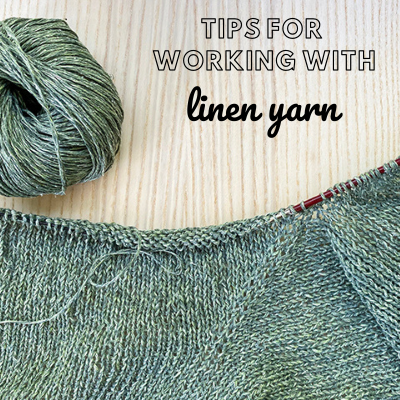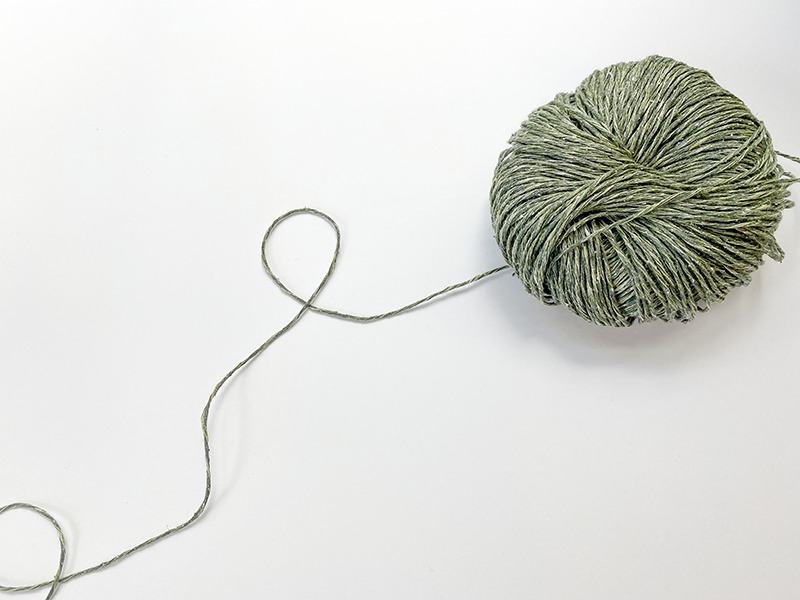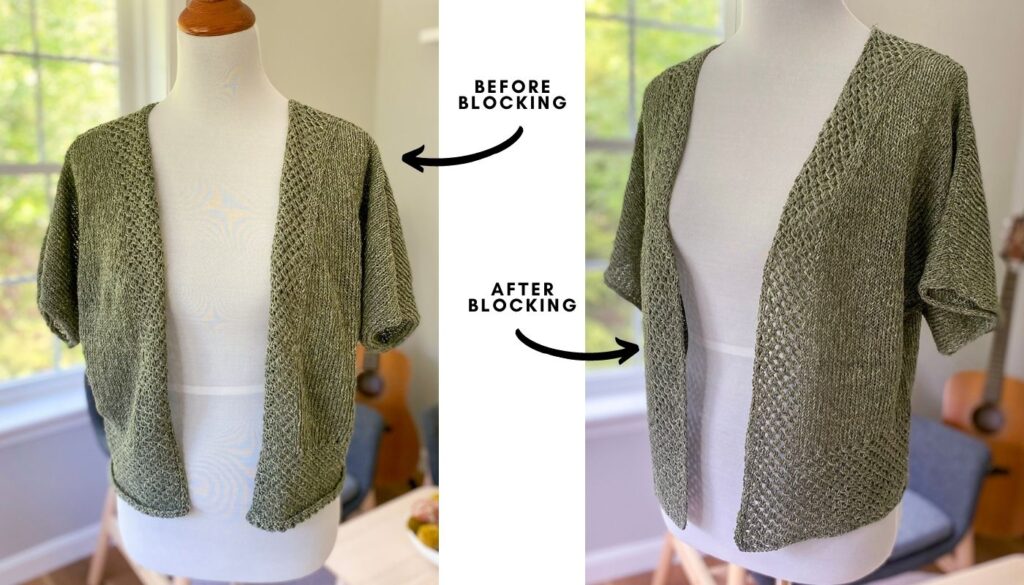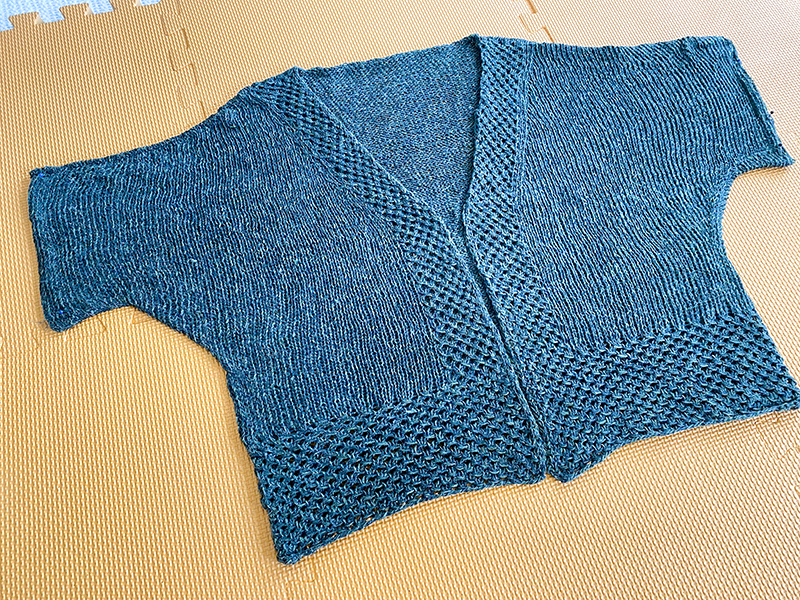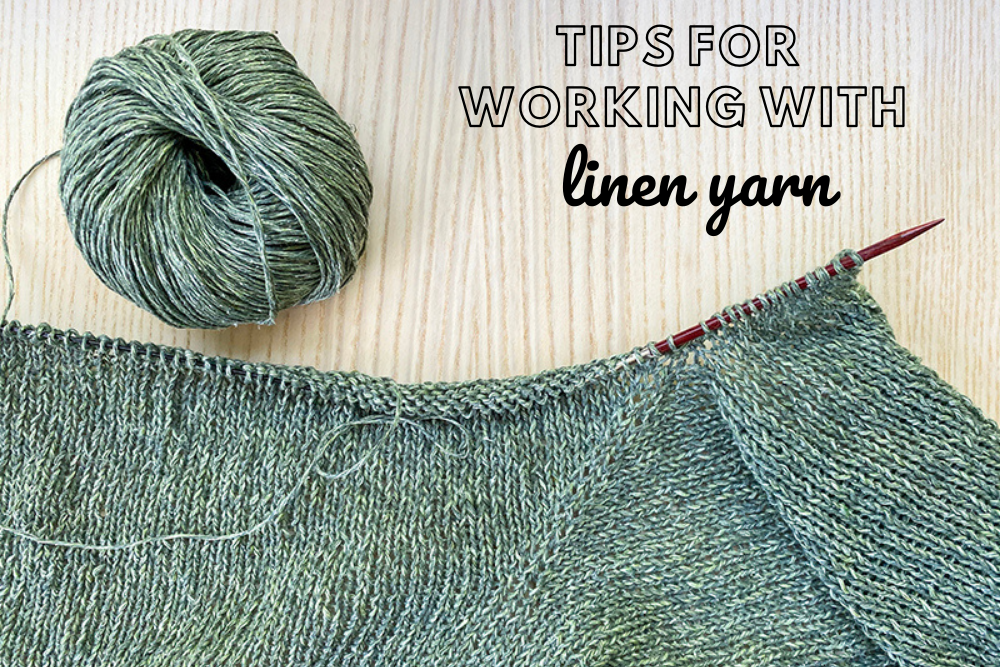
I recently released a brand new summer pattern – my Cruel Summer Cardi! It’s knit up in Berroco’s new linen/silk blend yarn Chai which is such a great option for warm-weather garments because it has wonderful drape and feels light and airy to wear.
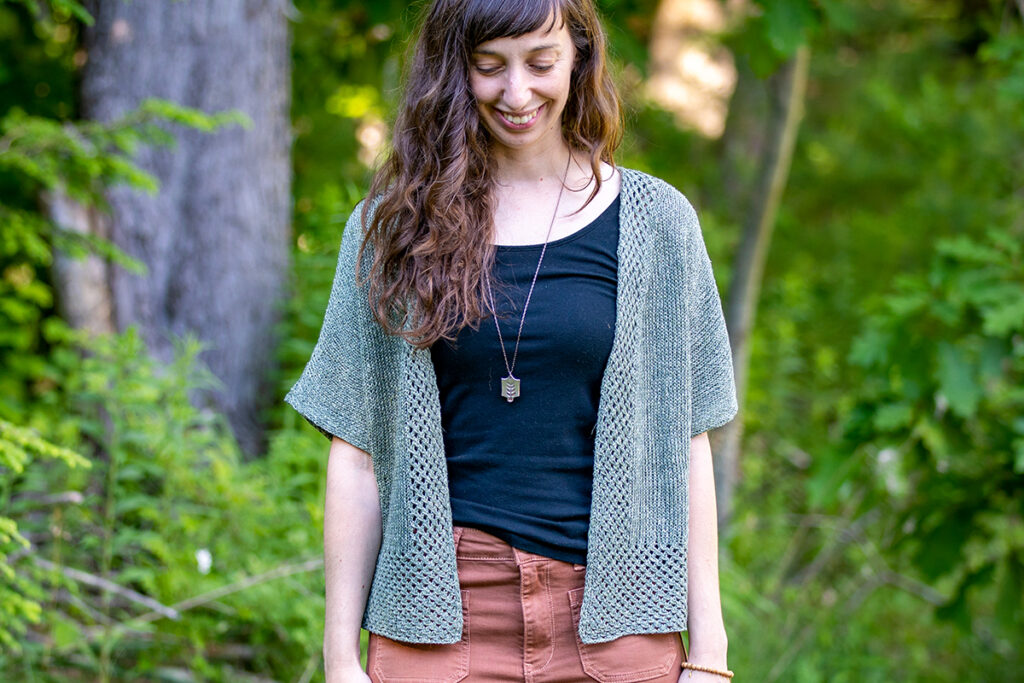
I’ve knit with different linen yarns over the years, and it can be such a different experience than knitting with wool yarns, so I thought I’d share a few tips I’ve learned along the way that perhaps you might find helpful the next time you knit with linen!
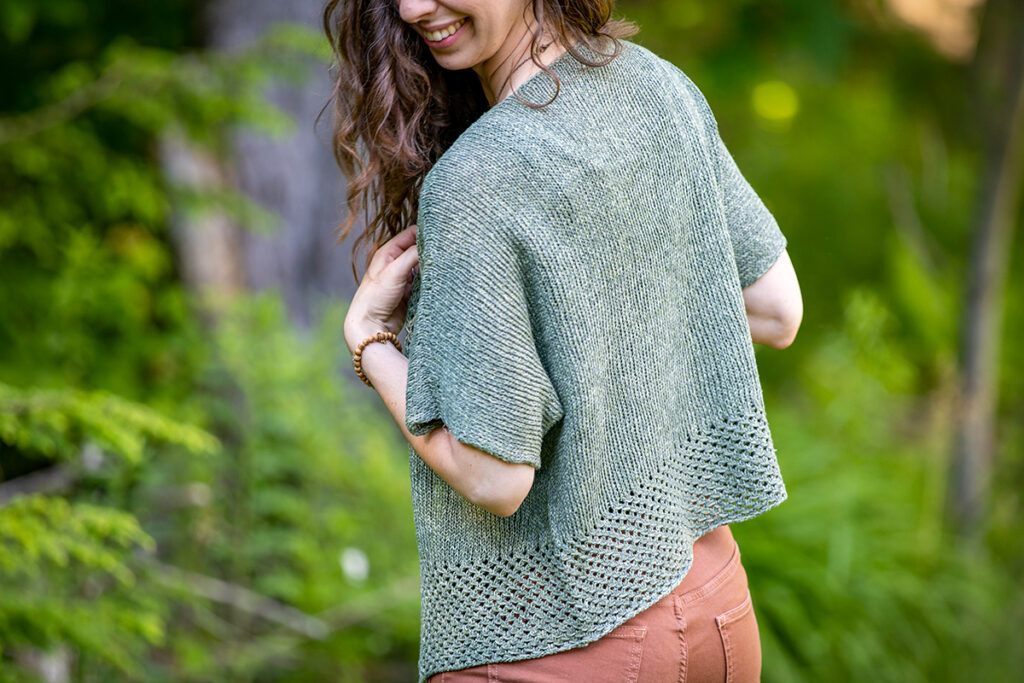
Tip #1: Gauge may tighten after blocking
If you’ve gauge swatched with wool yarns, especially superwash wool yarns, you have probably learned that often your stitch gauge can grow a bit after blocking (i.e, your stitches loosen up, causing your swatch and garment to get bigger width-wise after blocking). But with linen or linen blend yarns, sometimes the opposite can happen – it can shrink a bit and get tighter! If you’ve never knit with linen this can be a surprising discovery. Not every linen yarn will do this, but I’ve often had it happen to me, so don’t be surprised if it happens to you! Also, don’t fret if you are working on a swatch and it appears to be too loose at first – it’s important to block to your swatch because it may in fact tighten up afterwards.
Tip #2: Gauge may be inconsistent as you work on your garment
Linen has little to no elasticity, so when you are knitting with it you won’t have the same “springy-ness” or “bounce” that you may find with wool yarns, and this is what gives linen such great drape. So without this elasticity, I personally find that keeping my tension consistent throughout a garment is tricky to do (and I know others have had this same issue too!). This is often why you’ll find patterns that call for linen yarn are flowy, a bit oversized and meant to be worn with positive ease, because they can be more forgiving of gauge inconsistencies. For example, overall my gauge in Cruel Summer is 20.5 sts/4″, but in some areas my tension is a bit tighter and there are some areas where it’s bit looser – this is not uncommon in linen knitting. So as long as you pick a size that provides you with some extra positive ease, it’s ok if your gauge wanders a bit from time to time! (note: to learn more about “positive ease” and what that means exactly, check out my blog post here).
Tip #3: Tighten up your yarn at the edges
In many linen cardigan patterns, such as Cruel Summer, the edges of the Fronts often remain “raw”, i.e, you don’t pick up the knit the edge stitches at the end. This is because they won’t roll like they might in wool yarns (and if they roll a little, you can steam/iron them and they will stay flat). But in order to try to keep those raw edges nice and neat, I have found it helpful to work my edge stitches a bit tightly. What I mean by this is that I give the yarn an extra tug after I work the first few stitches. For example, in Cruel Summer, I have you work a slip stitch edge where you slip the first stitch of every row – after you slip that stitch, when you work the next stitch or two, I give the yarn an extra tug after I work it. I demonstrate exactly how I do this in my video tutorial for this pattern so I recommend you check it out to see exactly what I mean by this.
Alternatively, for many designs you can also consider deviating from the pattern and not leaving the edges raw. I made versions of my Castaway tee and Raincheck vest where I did this, both designs that originally featured raw edges. You can learn more about it in this blog post about Castaway and this blog post about Raincheck.
Tip #4: Hand wind your yarn into a ball
Whether your linen yarn comes in a hank or ball, you’ll want to hand wind it into a new ball. This is because it will tangle easily – so even though Chai comes in a ball, it’s a loose ball and it will likely tangle on you after working with it for a couple of inches. So by hand-balling it, you’ll avoid a messy situation later on! Here’s some instructions I found online that I thought were great for demonstrating this (note: I don’t recommend center pulling with linen yarn).
Tip #5: Join a new ball of yarn at sides of your garment (not at beginning/end of row)
When working with linen in a cardigan-type piece (so anything that has open fronts like Cruel Summer), consider avoiding joining a new ball/skein of yarn at the beginning or end of the row like you might typically do. This is because linen ends can be a little trickier to hide, and because linen is so drapey the cardigan fronts may flap open a bit and so you don’t want your yarn ends showing at the front of the work like that. I have found joining a new skein at the side to be the best place because it won’t be visible at all and it’s just a more inconspicuous location. Also, I tend to use my duplicate stitch method of weaving in ends with linen – you can check out my blog post here about that, as well as my video tutorial here.
Tip #6: It’s all about blocking and ironing
Just like with wool, blocking makes all the difference with linen yarn. check out my before and after picture below:
So how do I block linen? I wet block it just like I do with wool (you can check out my tutorial about blocking here). Below is a photo of my Cruel Summer on the blocking tiles:
After it comes off the blocking tiles, it’s going to feel stiff. I like to steam it afterwards – or you can put it in the dryer for a little bit (please note: every linen yarn can be different so it’s best to first read the care instructions on the yarn label). I will often iron my edges too on low heat (one of the great things about linen!) – ironing will flatten your stitches, but depending on the design/garment, that may be just fine (and just do so carefully and on low heat – try a little section at a time).
I hope one (or all!) of these tips might be helpful in your next linen project! If you have any questions, feel free to reach out.

